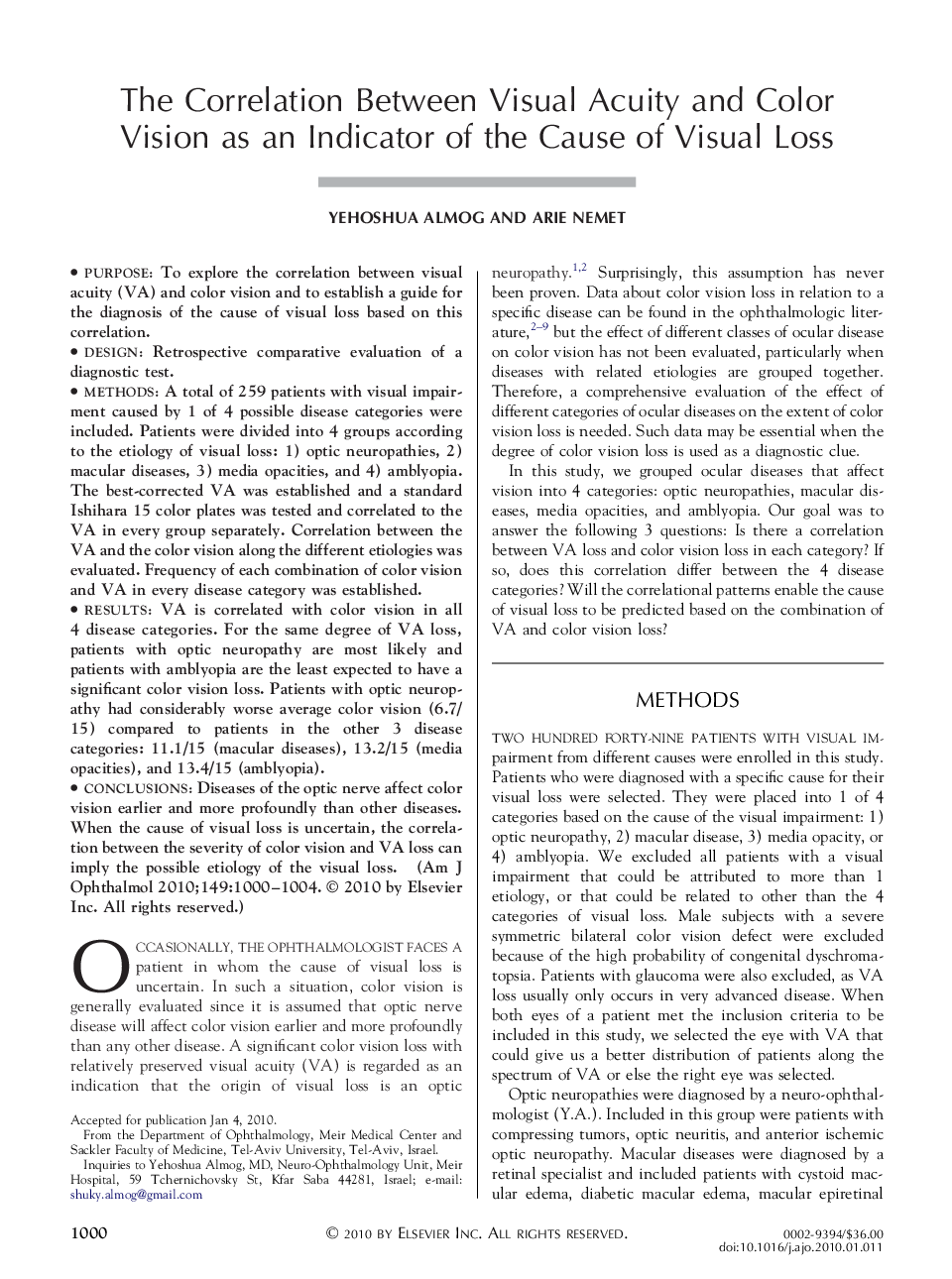| Article ID | Journal | Published Year | Pages | File Type |
|---|---|---|---|---|
| 4004036 | American Journal of Ophthalmology | 2010 | 5 Pages |
PurposeTo explore the correlation between visual acuity (VA) and color vision and to establish a guide for the diagnosis of the cause of visual loss based on this correlation.DesignRetrospective comparative evaluation of a diagnostic test.MethodsA total of 259 patients with visual impairment caused by 1 of 4 possible disease categories were included. Patients were divided into 4 groups according to the etiology of visual loss: 1) optic neuropathies, 2) macular diseases, 3) media opacities, and 4) amblyopia. The best-corrected VA was established and a standard Ishihara 15 color plates was tested and correlated to the VA in every group separately. Correlation between the VA and the color vision along the different etiologies was evaluated. Frequency of each combination of color vision and VA in every disease category was established.ResultsVA is correlated with color vision in all 4 disease categories. For the same degree of VA loss, patients with optic neuropathy are most likely and patients with amblyopia are the least expected to have a significant color vision loss. Patients with optic neuropathy had considerably worse average color vision (6.7/15) compared to patients in the other 3 disease categories: 11.1/15 (macular diseases), 13.2/15 (media opacities), and 13.4/15 (amblyopia).ConclusionsDiseases of the optic nerve affect color vision earlier and more profoundly than other diseases. When the cause of visual loss is uncertain, the correlation between the severity of color vision and VA loss can imply the possible etiology of the visual loss.
